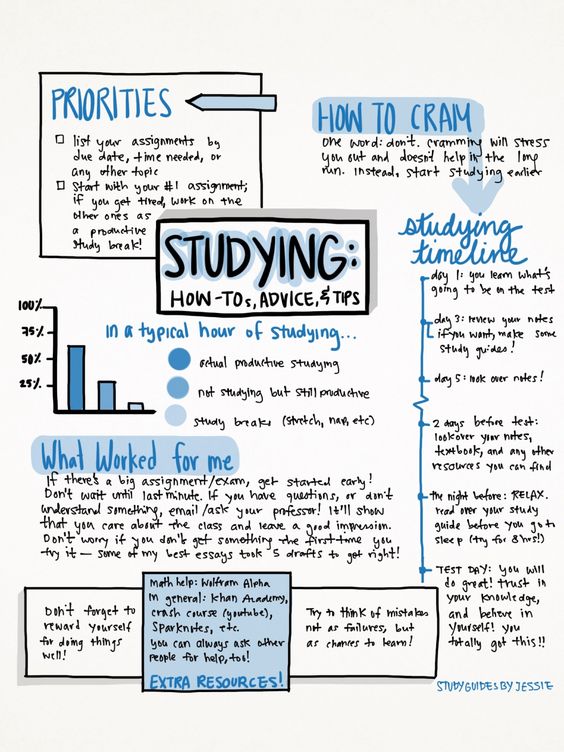It is near impossible to remember everything. There is no simple hack – no textbook osmosis, no magic video, and especially no last-minute study ritual – to spontaneously remember all the information needed for a test. However, it is possible to increase the amount of time before forgetting again.
The Forgetting Curve
After learning new information, it is stored in the brain at 100% retention. However, over time, the retention decreases at an exponential rate. The graph of this decrease is called the forgetting curve.
Spaced Repetition
Fortunately, the forgetting curve can be interrupted with intermittent studying. Each time a concept is reviewed, the forgetting curve will reset back to 100% retention. Moreover, it will take longer to forget the information again.
To properly review information and combat the forgetting curve, spaced repetition must be practiced. If revisions take place too soon after each other, the information is not properly forgotten, meaning the brain cannot put the effort the remember the information. On the other hand, if the revisions are too far apart, all the information is completely forgotten, and it becomes unnecessarily difficult to relearn it.
For the best results, leave study gaps of one day, then two days, then keep adding gaps of one more day. Since finals is only a week away, keeping a one-day gap between topics should be sufficient.
Extra Tip: Interleaving
To maximize the effects of spaced repetition, combine it with the process of interleaving. Interleaving is the process of splitting up the work for different classes into smaller chunks, then alternating those chunks. The benefit of this method is that the process of continuously switching subjects forces the brain to constantly recall information, which improves retention in the long run. It can also reduce the amount of time needed to perform spaced repetition.
Conclusion
The processes of spaced repetition and interleaving are both core parts of learning information in a timely and effective manner. However, there are times when there is simply not enough time to fully learn the information with this method. Check in next time for an article about various memorization techniques.
For more information, read the article Spaced Repetition: the Busy Student’s Best Friend by J.E. Choi.







